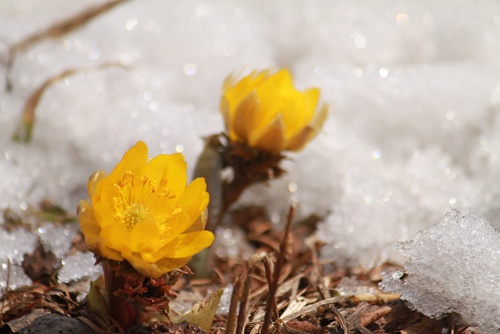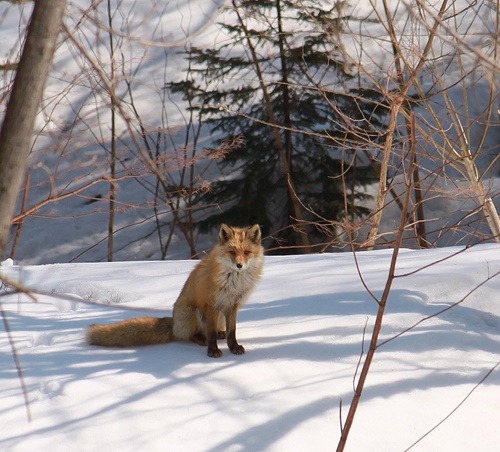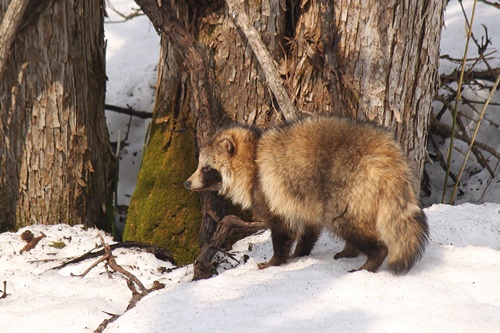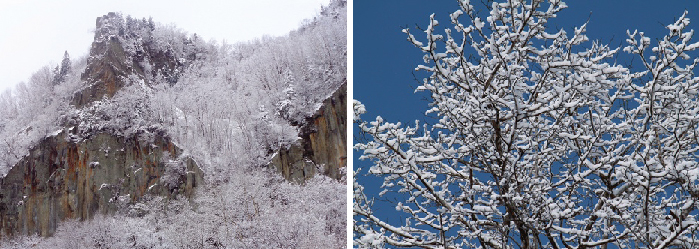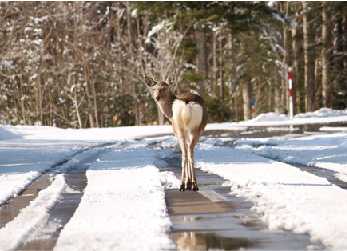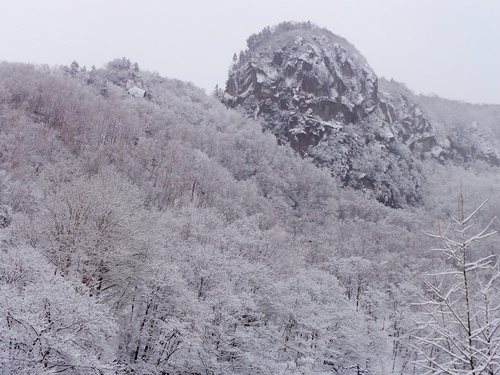The Adonis ramose flowers have bloomed in our observation area (Kamikawa Park).
(The flowers began to bloom on April 3, but were subsequently covered by repeated snowfall.)
The forecast today predicts higher temperatures, so it’s likely the number of blooming flowers will gradually increase in places where the snow has melted.
Although not in our observation area, some blooming flowers were observed on March 30 of this year, which is earlier than most years.
I should mention that blooming started at the observation area on April 23 in 2013, April 15 in 2012, and April 6 in 2011, which means this year’s blooming is about 10 days earlier than last year’s.
As an indicator of the new season’s arrival, I’d like to see the blooming Adonis ramose lead the way to spring.
But, the mountains? Well, that’s another story…
Believe it or not, the snow at Mt. Kurodake’s 7th Station has reached a depth of 500 cm.
That is the most snow recorded there since 1997.
I’m a bit worried about the amount of snow that will remain this year.
Photo: Adonis ramose at Kamikawa Town Apr. 13
